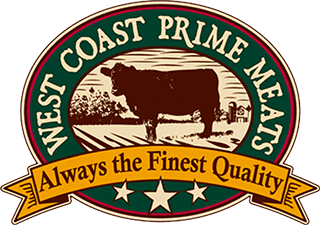How to Turn Your Kettle Grill Into a Smoker
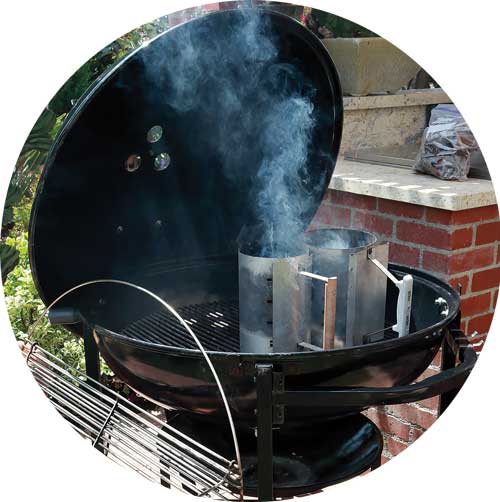
In our new cookbook, West Coast Prime Meats Cooks, several recipes call for a smoker. If all you have is a kettle-style grill, don’t despair. With some attention and wood chunks, you too will have a smoker.
The first step is to decide which type of wood you want to use for the smoke flavor, then locate small chunks of that wood. Most of the fruit trees (think apple or cherry) produce good smoking materials. So do hickory and pecan.
Either lump charcoal or briquettes works fine for the main heat. Choose a type you are familiar with so you know how quickly it burns.
While you are shopping for wood, invest in some disposable aluminum pans. Deep dish pans or small casserole trays work fine.
Once you have your supplies, soak the chunks in tap water overnight, weighting them down with a wide, heavy object (e.g., a plate with a #10 can on top) that will keep all the wood below water. Alternatively, place the chunks in a large, sturdy Ziploc bag and soak them in the bag. Drain off the water just before you light your coals.
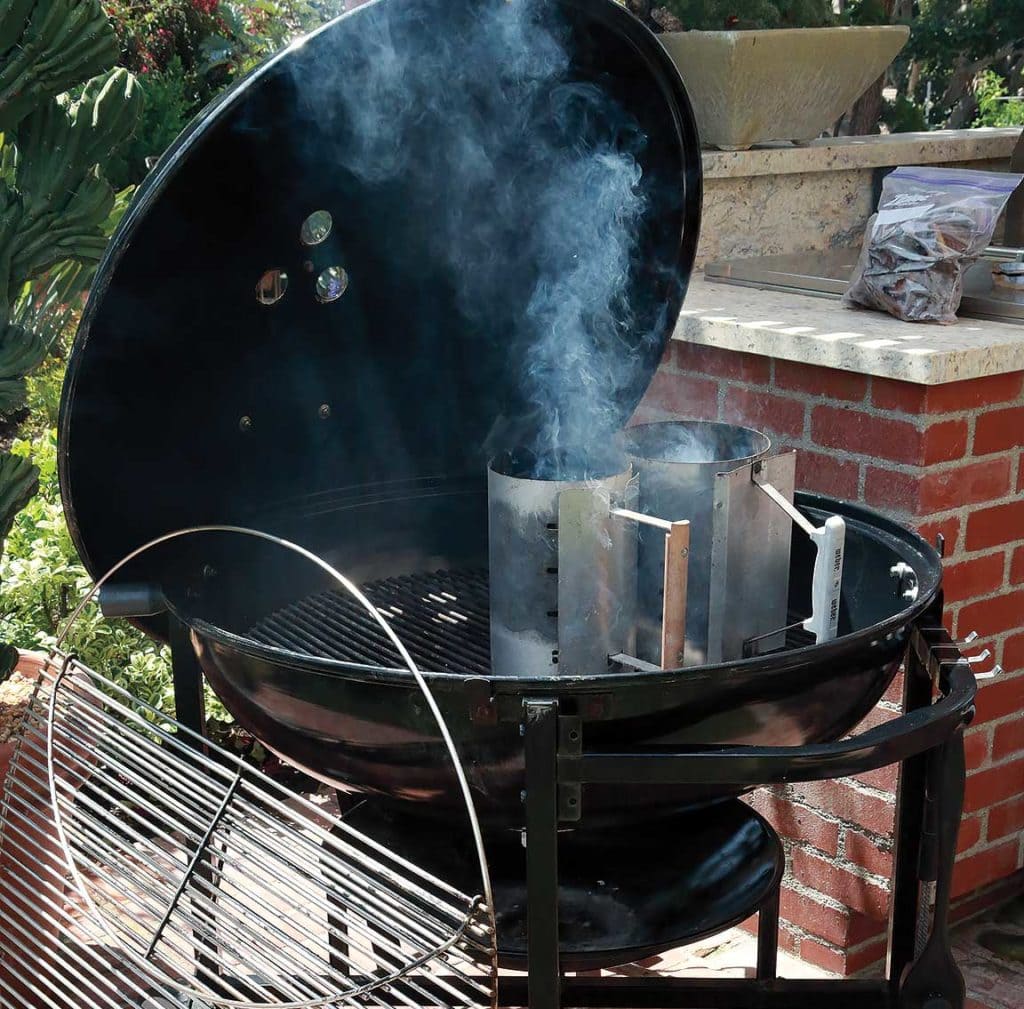
1
Light the coals. To light the coals, we like to use a metal chimney, available at most hardware stores. Stuff a few pieces of newspaper in the bottom, fill the chimney with charcoal pieces and light the newspaper through the hole in the bottom. When the charcoal is white-hot, it is ready.
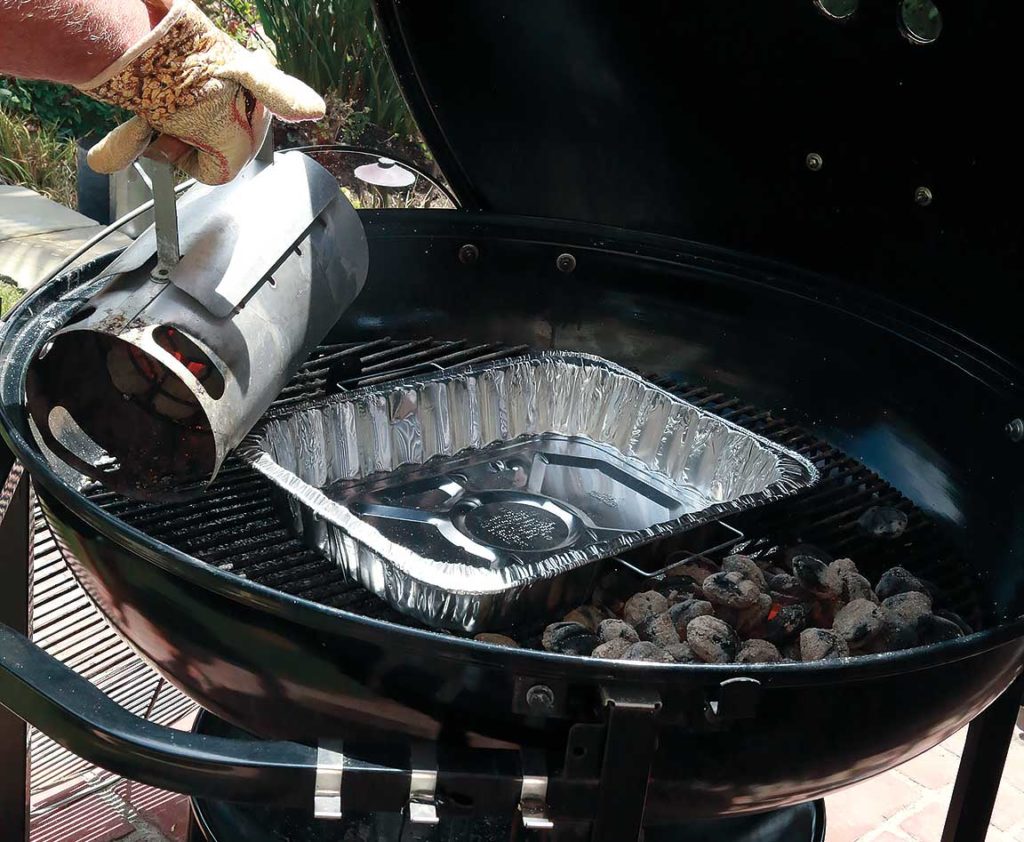
2
Pour the charcoal out of the chimney to one side of the kettle. Place your aluminum tray on the other side on the bottom of the grill. Fill the tray halfway with water. (The Weber we have at West Coast Prime Meats is quite large, so we place coals on either side of the cooker and place our aluminum tray in between.)
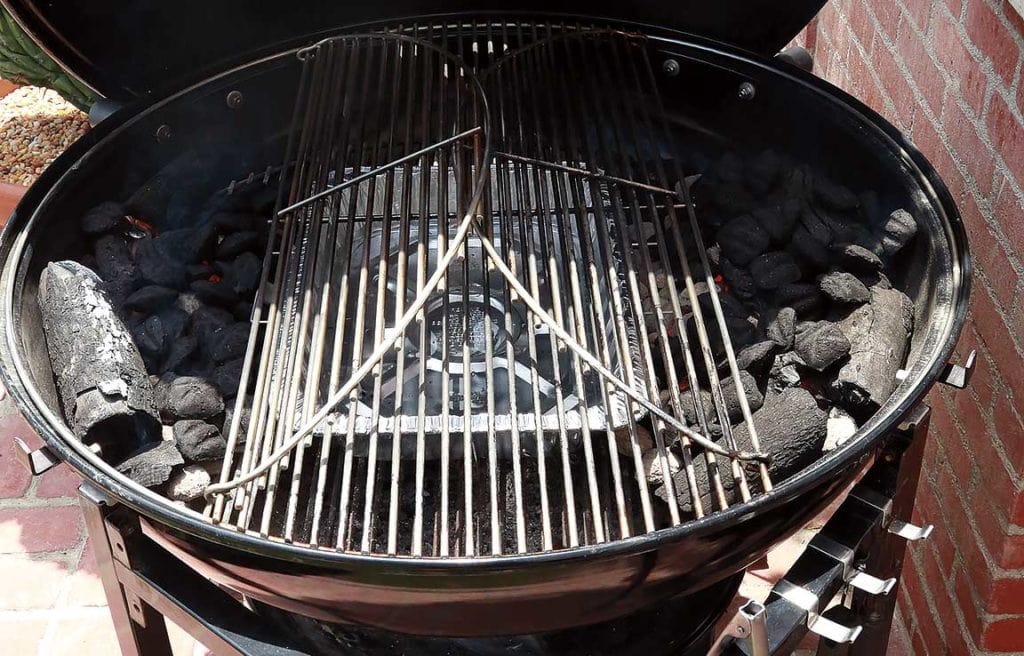
3
Place a few handfuls of the soaked wood chunks on top. You will need to add more charcoal and wood chunks during the process, so figure out how you will lift the grill rack to add more wood chips now.
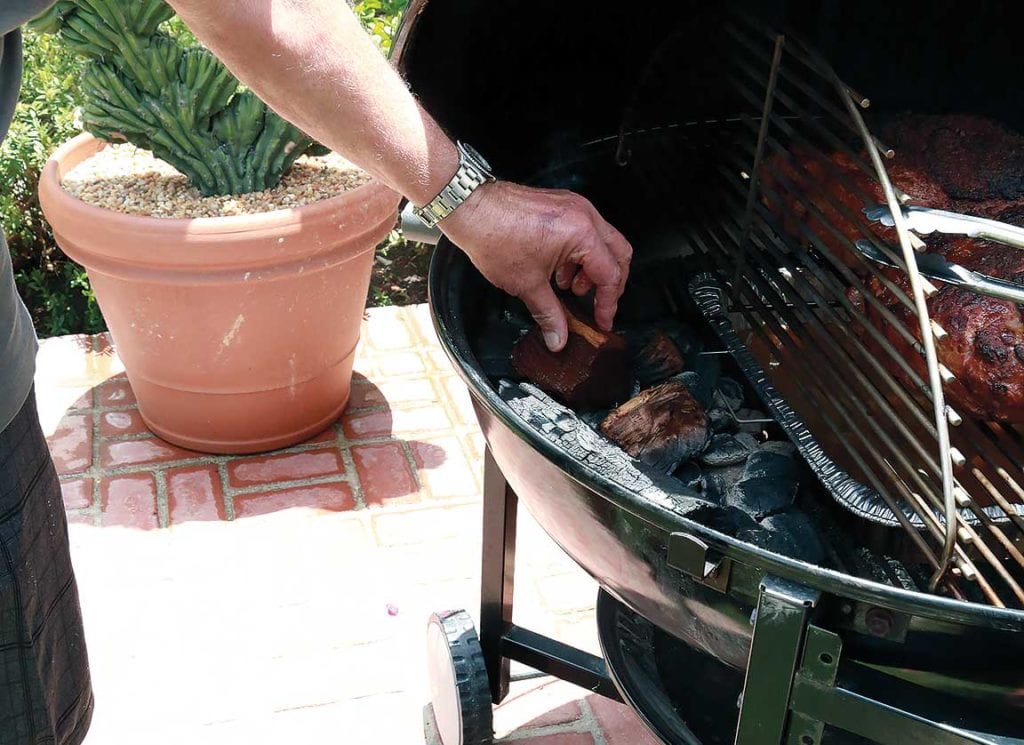
4
A hinged grill rack makes this easy, but if you don’t have one, you can lift off the entire grill rack; just be prepared if that is the case.
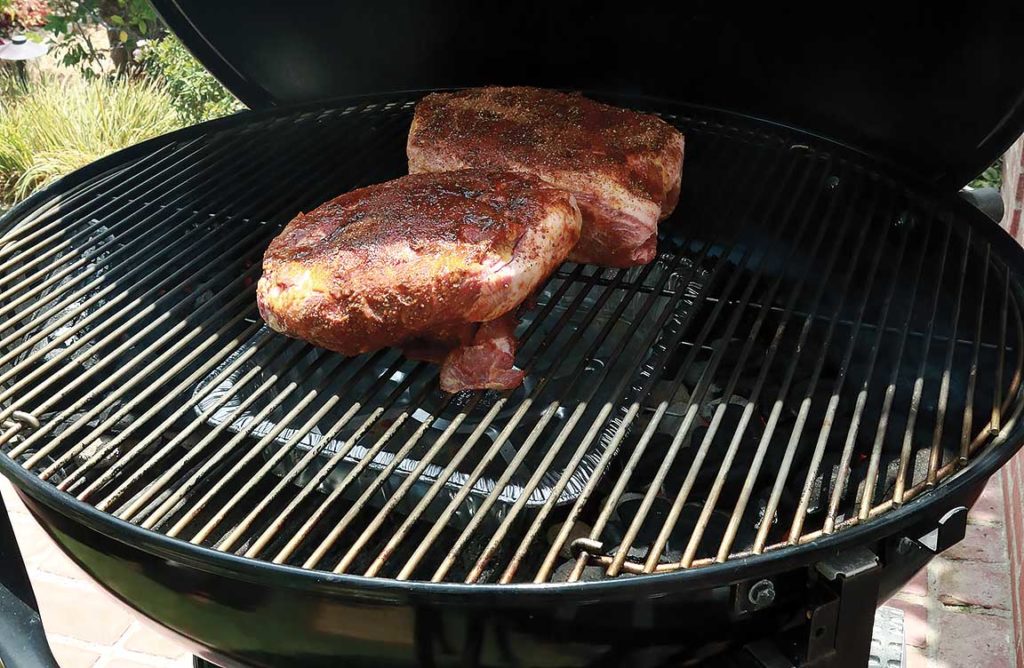
5
Place the meat above the aluminum trays. Do NOT place the meat above the coals or it will cook too fast. The water in the trays will collect any fat that melts away so you do not have a kettle fire. It also helps regulate the temperature around the meat.
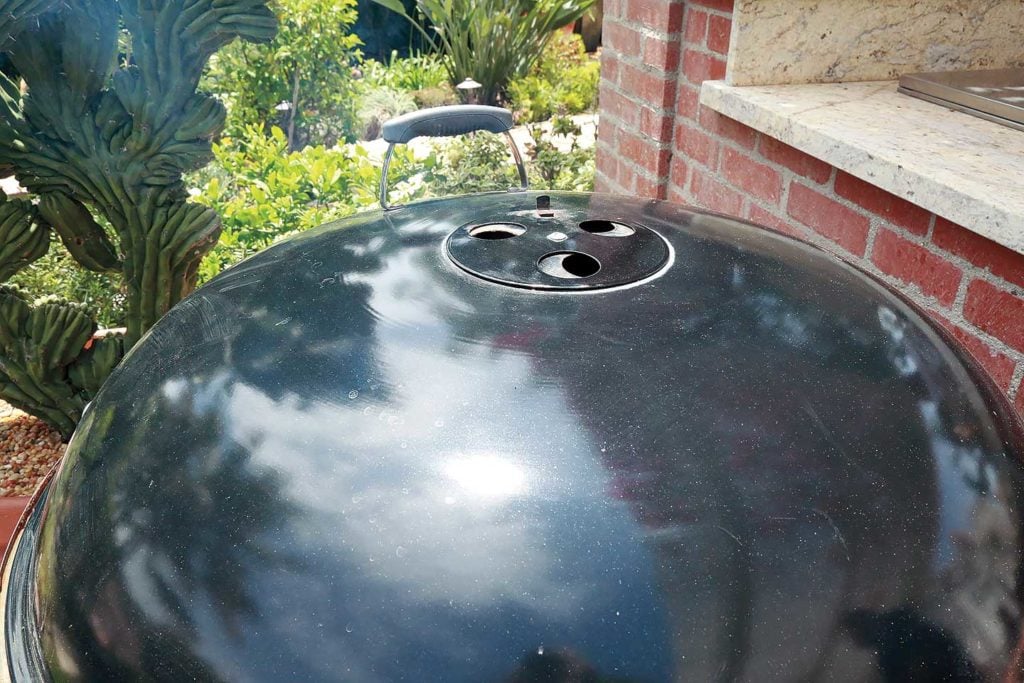
6
Put the lid on the kettle, placing the vent just above the meat. Close all top vents and let the meats smoke. If the lid fits so tightly that no smoke can escape, leave the top vent open just slightly. If you do, however, keep a close eye on the coals to make sure they are not too hot. Smoke should escape from the kettle.
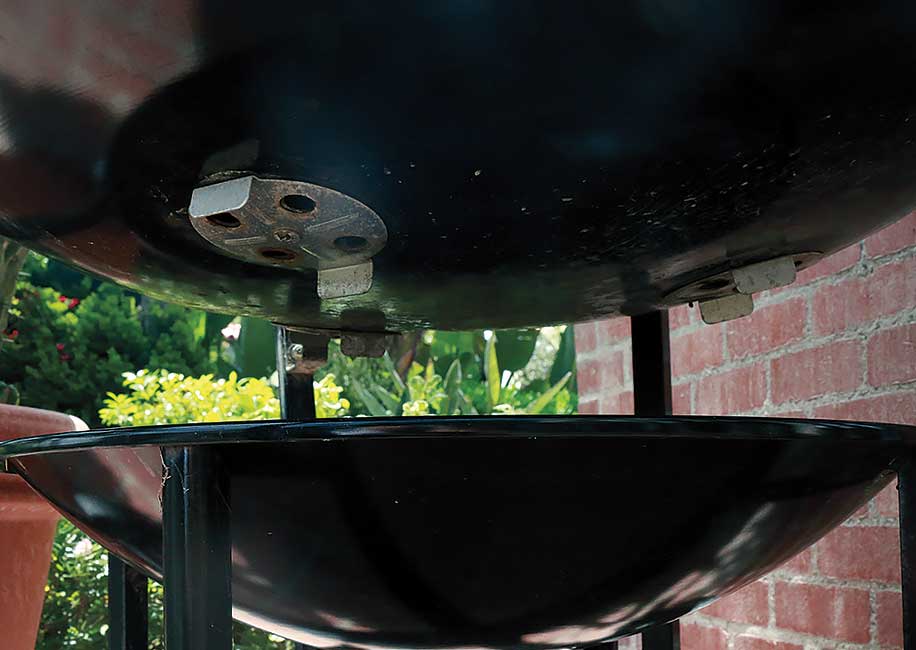
7
If the coals are burning quickly, close the bottom vents.
This is a time-consuming process, so be patient. Plan on about one hour of smoking time per pound of meat. Check the temperature from time to time by sticking a meat thermometer into the vent in the kettle lid. Ideally, it should read between 225 degrees Fahrenheit and 250 degrees Fahrenheit but air right under the lid will be hotter than air near the meat, so lid temperatures up to 300 degrees Fahrenheit are okay. If the temperature is too low, open the vents and let the coals flare; if it remains too low, add more coals and a few more wood chips. If the temperature is too high, take off the lid, let the coals burn down, add some wood chips and return the lid.
Even if the temperature is correct, open the lid every hour or so and rotate the meat. This is also a good time to add another handful of soaked wood chips. If your meat is cooking too quickly or appears to be burning, remove from the smoker and finish in the oven. There, too, you want the temperature to be between 225 and 250 degrees Fahrenheit.
